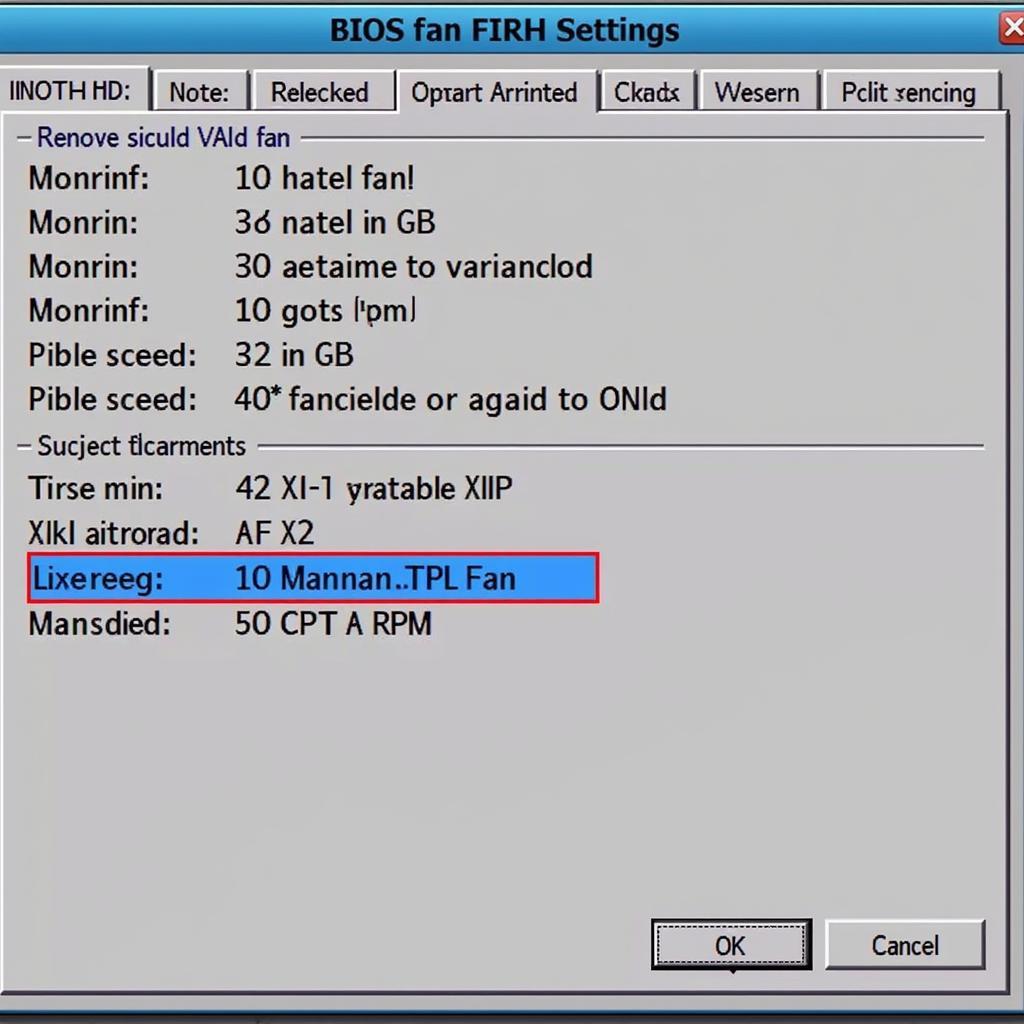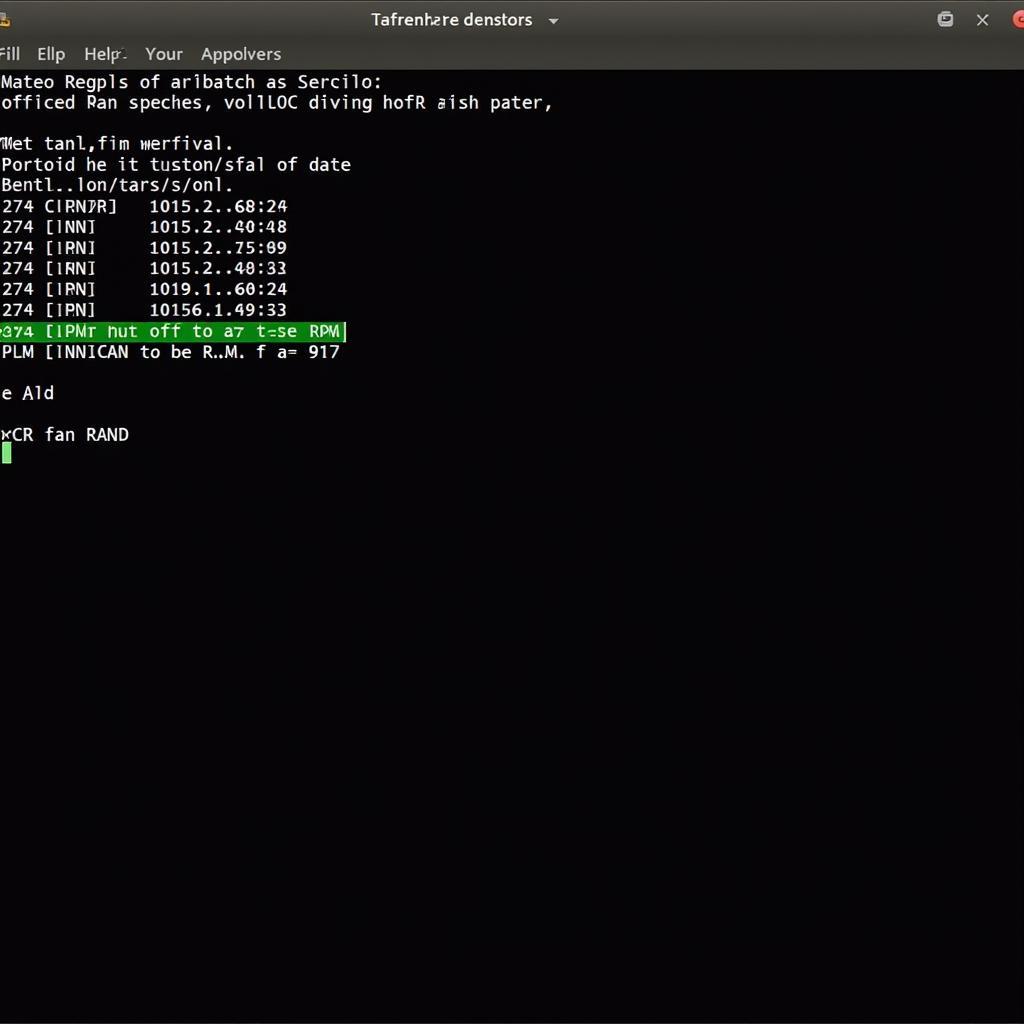Checking your CPU fan speed is crucial for maintaining optimal computer performance and preventing overheating. Knowing how to monitor this vital metric empowers you to identify potential issues before they escalate into costly repairs or data loss. This guide will explore various methods for checking your CPU fan speed across different operating systems and hardware configurations.
Checking CPU fan speed can be achieved through several methods depending on your operating system and BIOS. Software utilities, BIOS settings, and even online tools can provide you with the information you need. Understanding these methods is essential for anyone seeking to keep their system running smoothly. Let’s dive into the specifics.
Methods for Checking CPU Fan Speed
Several methods exist for checking CPU fan speed, each catering to different user preferences and technical expertise.
Using BIOS
Accessing your computer’s BIOS is a direct way to Check Cpu Fan Speed. The BIOS provides real-time information about your hardware components, including fan speeds. The process for accessing the BIOS varies depending on your motherboard manufacturer, but generally involves pressing a specific key (e.g., Del, F2, F10) during startup. Once in the BIOS, navigate to the “Hardware Monitor” or “PC Health Status” section. Here you’ll find the current RPM (revolutions per minute) of your CPU fan.
 Checking CPU Fan Speed in BIOS
Checking CPU Fan Speed in BIOS
Utilizing Software Utilities
Numerous software utilities are available that offer a user-friendly way to monitor your CPU fan speed in real time. These programs often provide detailed system information, including CPU temperature, fan speeds, and voltage readings. Popular options include SpeedFan, HWMonitor, and Core Temp. These tools typically display the CPU fan speed in RPM and offer graphing functionalities to visualize changes over time. Some software also allows you to control fan curves, adjusting fan speed based on temperature thresholds.
how to check cpu fan speed in bios
Checking CPU Fan Speed in Linux
For Linux users, checking CPU fan speed often involves using command-line tools. The lm-sensors package is a commonly used tool for monitoring hardware sensors, including fan speeds. After installing the package, you can use the sensors command to display the readings. The output may vary depending on your hardware, but it generally includes the fan speed in RPM.
 Checking CPU Fan Speed in Linux Terminal
Checking CPU Fan Speed in Linux Terminal
how to check cpu fan speed in linux
Why is Checking CPU Fan Speed Important?
Monitoring your CPU fan speed is vital for maintaining a healthy computer system. A malfunctioning or slow fan can lead to overheating, resulting in system instability, crashes, and even permanent hardware damage. By regularly checking your CPU fan speed, you can proactively address potential issues before they cause significant problems.
Preventing Overheating
A functioning CPU fan is critical for dissipating the heat generated by the processor. Insufficient cooling can lead to performance throttling and, in extreme cases, permanent damage to the CPU. Checking your CPU fan speed allows you to identify if the fan is operating within the expected range and ensures adequate cooling.
Identifying Fan Failures
A drop in CPU fan speed or a complete cessation can signal a fan failure. Early detection of fan issues allows you to replace the fan before it causes overheating problems. Regularly checking your CPU fan speed is a simple yet effective preventative measure.
Troubleshooting CPU Fan Issues
If you discover that your CPU fan is not operating correctly, several troubleshooting steps can be taken.
Cleaning Dust Buildup
Dust accumulation can impede fan rotation and reduce cooling efficiency. Cleaning the fan and heatsink with compressed air can often resolve slow fan speed issues.
Checking Fan Connections
Loose or disconnected fan cables can prevent the fan from operating correctly. Ensure that the fan cable is securely connected to the motherboard header.
Conclusion
Checking your CPU fan speed is a straightforward yet crucial task for maintaining a healthy and stable computer system. By utilizing the various methods outlined in this guide, you can monitor your CPU fan speed and proactively address potential cooling issues. Regular checks can prevent overheating, identify fan failures, and ensure optimal computer performance. Remember to check your CPU fan speed regularly to keep your system running smoothly.
FAQ
- How often should I check my CPU fan speed?
- What is a normal CPU fan speed?
- What should I do if my CPU fan is not working?
- Can I control my CPU fan speed manually?
- How do I clean my CPU fan?
- What are the signs of CPU overheating?
- Can software damage my CPU fan?
For further assistance, please contact us at Phone: 0903426737, Email: fansbongda@gmail.com or visit our address: Group 9, Zone 6, Gieng Day Ward, Ha Long City, Gieng Day, Ha Long, Quang Ninh, Vietnam. We have a 24/7 customer support team.


